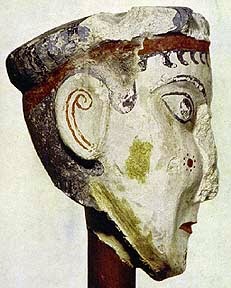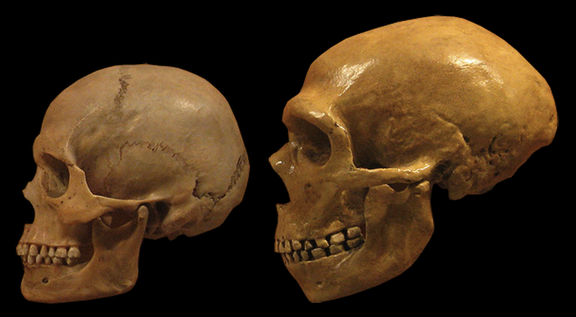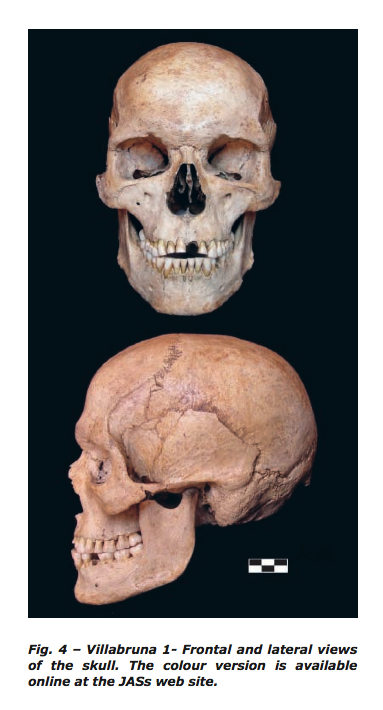bicicleur 2
Regular Member
- Messages
- 6,367
- Reaction score
- 1,402
- Points
- 113
And you gonna take that like an argument that " Not Worth It " ?
not worth what? what are you getting at?
there is no Siberian DNA found in paleolithic nor in post-LGM Europe
Follow along with the video below to see how to install our site as a web app on your home screen.

Note: This feature currently requires accessing the site using the built-in Safari browser.
And you gonna take that like an argument that " Not Worth It " ?
Does Solutrean genomes have been study to your knowledge ?not worth what? what are you getting at?
there is no Siberian DNA found in paleolithic nor in post-LGM Europe
Hey i fought i could share some photos that i take in Berlin.
Combe Capelle. View attachment 9085
View attachment 9086
http://www.telegraph.co.uk/science/...-jaw-dropping-changes-human-skull-scientists/
The largest changes in skull morphology were observed in groups consuming dairy products, suggesting that the effect of agriculture on skull morphology was greatest in populations consuming the softest food.
Oh thanks... I'm gonna see about that.Neanderthal. View attachment 9087
As Moesan pointed out, we have to be careful with dairy. Dairy was also thought to stand behind white European skin, but it turned to be just a myth.This article that came out a few days ago suggests that consumption of dairy products and farming resulted in the shrinking of the human jaw, and made skulls more slender. The reason is because eating stuff like cheese, and cereal required less chewing.
It says farming, but I thought consumption of dairy products and animal domestication was introduced by the Yamnaya. So was it a combination of both lifestyles?

http://www.aee.gr/english/8other_research/a_minoan_microcephalic.htmlThe skull of a Minoan microcephalic was found in the excavations of Zakros, preserved and studied by Dr A. Poulianos. It belonged to a man of 20 years of age, who most probably was member of the Minoan dynasty. Its cranial capacity is of about 530 cc and reflects a genetic diversion connected to long terms isolation and endogamy of Minoans. Thus neither Cretans, nor members of the Minoan dynasty were immigrants from elsewhere, but a result of local evolution. During the military junta, in 1971, it was given to Vienna Museum for "study". It returned to Greece in 1997 after a juridical straggle of the Anthropological Association of Greece. For the benefit of science we urgently appeal to the world scientific community to assist us in protecting the Greek findings from colonial attitudes.




http://www.aee.gr/english/8other_research/a_minoan_microcephalic.html
As far as I know, pygmy skull capacity is around 1,000cc. If so, ancient Minoan is so small people. Is it possible to be mixed with the other Greeks? Is there any research regarding Minoan skull?
pygmy:

http://www.e-allmoney.com/customs/pygmies.html
mycenaean(41.95cm):

Botai skull:


1.another skulls:
http://iggc.kz/wp-content/uploads/2017/03/Rezultaty-raboty-Lab-Pop-Gen-noyab-2016.pdf
Spoka -2 was classified as an intermediate between caucasoid and mongoloid, being similar to Okunevo. Any caucasoid skull was not found in Karzakstan before andronovo.
2. Is there any chance of yDna to be “N” like Okunevo?
The genotyping of the "Botaysky man" showed a 100% Belonging to the K1b2 mtDNA haplotype
97.1% probability of O2 of the Y-chromosome haplotype
I thank again here Lebrok for his skulls posting -
concerning Ötzi, when I saw his skull I did not feal it as a 'mediterranean' crania, and I keep on thinking that - I said and I say again he shows features where more than a type is implied and among them some 'cromagnoid' features, on na 'alpine' way (I lack metric measures but it seems more mesocehpalic than true dolicho- or subdolichocephalic) - the skull is low, the orbits retains yet some cromagnoid traits - its lines are very far from the gentle mediterranean eastern types which appeared at Neolitical daybreak in western and eastern Europe (high skull, very dolichocephalic, narrower jaws, longer and narrower upper face, higher and rounder eyescokets... I confess it is a rough analysis because I lack measures and different angles of sight but... Ötzi was a mix where dominated yet mesolithical traits upon more m'editerranean' ones so the autosomlas dominant 'mediterranean' classification deserves surely to be refined...
I have yet some problem with the less 'north european' and more 'mediterranean' classification of Northern Italians compared to Iberians too
Anatolian farmers are predominantly northwestern Anatolians. It makes no sense to discuss genetic facts with somewhat subjective 'phenotypic readings'. As for the comparison between northern Italians and Iberians: the distance between them is quite small, but Iberians are pulled further north because of the larger WHG genetic component that is more common in northwestern Europe and less common in the eastern Mediterranean. The Western Anatolian component of the Iberians is also more similar to the Anatolian component of central and northern Europe. The Italian Neolithic, on the other hand, was also influenced by a greater diversity of Anatolian groups.


This thread has been viewed 78154 times.
